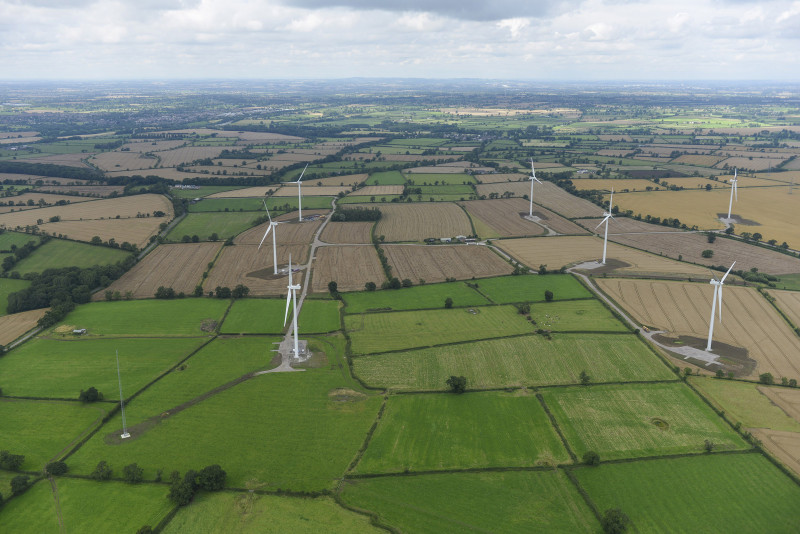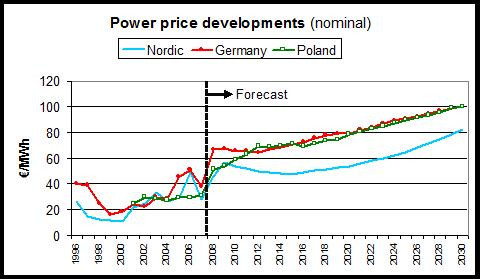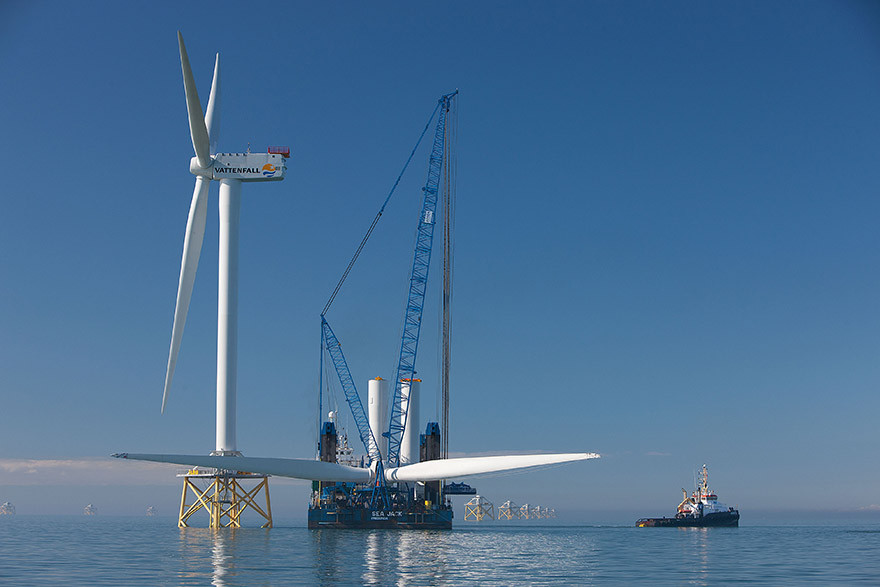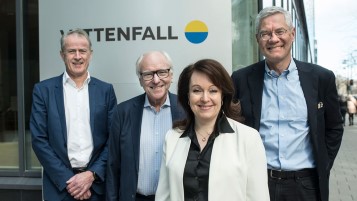
Vattenfall's expansion and divestments
Vattenfall's strong expansion in Europe was based on the hope that trade in emission allowances would solve the climate issue and the price of electricity would continue to rise. But, with the economic crisis around 2009, demand fell. At the same time, substantial subsidies for new renewable electricity generation were introduced. All this led to much lower energy prices than expected. The previously well-motivated investments Vattenfall had made before 2010 thus turned out to be uneconomical.
Vattenfall's expansion really got under way in 2000, above all in Germany. Vattenfall's new CEO Lars G Josefsson continued with the previously formulated vision: Vattenfall will be a leading European energy company. This vision applied until 2010, and Vattenfall grew from net sales of just under SEK 30 billion in 1999 to almost SEK 215 billion in 2010. During the same period, the number of employees rose from 8,000 to 38,500.

Net sales and number of employees 1999-2010. Year: - | Place: - | Creator: unknown | ID: VF300031
Vattenfall was one of the few foreign players to succeed in establishing itself on the German market in the early 2000s. With regard to market position and competence, Vattenfall considered itself in a strong position to continue to play a part in the consolidation of the European energy industry.
Emission allowances raised electricity prices
A requirement introduced in Europe in 2005 made it necessary to have emission allowances in order to be able to generate electricity in fossil-fuelled plants. As a result, the cost of generating electricity in a coal-fired plant rose by about 15 öre/kWh. This, in turn, led to a similar rise in the wholesale electricity price. There were no emission allowance costs for Vattenfall's electricity generated in hydro power and nuclear power plants. The higher wholesale electricity price resulted in very high profits for Vattenfall. In continental Europe, moreover, the electricity generators were given their emission allowances free of charge, in spite of the increased wholesale prices. This brought further profits for Vattenfall.
Video player requires marketing cookies.
To view this content please click here to allow marketing cookies.
Vattenfall’s vision in 2000 (In Swedish)
Great expectations
In order to understand Vattenfall's expansion in Europe, it is important to remember what the electricity market and the price trend were like when Vattenfall made its investments. As late as 2008, Vattenfall forecast that the wholesale prices in 2030 would be over EUR 80/MWh in the Nordic region and EUR 100/MWh in Germany and Poland.

Power price developments 1996-2030. Year: - | Place: - | Creator: Unknown| ID: VF300032
Against this background, further expansion was very profitable. Among other acquisitions, Vattenfall purchased the Dutch energy company NUON in 2009.
At this time, Vattenfall and other large energy companies in Europe also had great faith that the politicians would fulfil the ambition of reducing carbon dioxide emissions with the aid of emissions trading.
In order for us to achieve our climate goals, therefore, coal-fired power plants must be made free of carbon dioxide emissions, Vattenfall reasoned.
For example, a satisfied Reinhardt Hassa, Vattenfall's Head of Generation in Germany, stated that: "In fifteen years, we will probably be able to have large, competitive coal-fired power plants that can generate electricity without emitting any carbon dioxide. At Vattenfall, we are the driving force of this development."
Renewable generation was supported
In parallel with its climate policy, the EU developed comprehensive support for expanding renewable electricity generation. Initially, the support systems did not have a major impact on the electricity market. It soon became apparent, however, that the various support systems for renewable generation had tangible consequences for the wholesale price, as a result of the construction of new electricity generation for which there was no natural demand on the market.

Swinford Wind Farm Leicestershire. An aerial photograph of Swinford Wind Farm. Year: 2013 | Place: Leicestershire, UK | Creator: Ian Thomas, Site Engineer | ID: VF300029
In Great Britain, Vattenfall acquired a number of companies, all of them in the wind power sector. "If all these projects come to fruition, it will mean that Vattenfall can generate about 15 TWh of wind power electricity in Great Britain," said Anders Dahl, then Head of Vattenfall's wind power operations.
The bank crash brought electricity prices down
The economic recession that hit Europe around 2009 also had a major impact on the wholesale electricity prices. Demand stagnated and when, at the same time, expansion of renewable electricity continued to increase, electricity prices were forced down. Industry's need for emission allowances also decreased, along with reduced industrial production, so that the price of emission allowances fell dramatically. Coal prices also fell.
Restoration of a healthy market for emission allowances would have required political decisions to reduce the number of emission allowances. But this did not happen.
All these factors together contributed to a fall in wholesale electricity prices to around EUR 20/MWh, i.e. much lower than forecast. This had serious economic consequences for all the investments that had been made. This applied not only to Vattenfall's investments but also to all the investments the major European energy companies had made since the turn of the century.

Ormonde offshore wind farm Year: 2018 | ID: VF300028
Investments in renewable electricity generation were an exception to this. Such investments proved to be profitable thanks to various forms of generous support, even though the price of electricity itself was lower. Vattenfall therefore continued to build offshore wind power, above all, in countries with stable support systems.
Large-scale divestments in a number of countries
Øystein Løseth took up the position of CEO of the Vattenfall Group and President of Vattenfall AB on 12 April 2010. Vattenfall's vision was redefined: "Vattenfall will develop a sustainable, diversified European energy portfolio with long-term increased profits and significant growth opportunities. At the same time, Vattenfall will be one of the companies leading the development towards environmentally sustainable energy production."
A number of operations in Germany, Denmark, Belgium, Poland and Finland were divested in quick succession.
By 2016, as a result, Vattenfall's net sales had fallen to SEK 139 billion, and the number of employees had been reduced to 20,000.

Net sales and number of employees 1999-2016. Year: - | Place: - | Creator: Okänd | ID: VF300025
Renewable expansion continues
Vattenfall continued its expansion in renewable electricity generation, above all in offshore wind power. Many large projects are procured competitively. It is therefore important to be cost-effective to win procurements. In March 2018 Vattenfall won the tender for the world's first non-subsidised offshore wind farm, Hollandse Kust Zuid.
Vattenfall occupies a strong second place in global offshore wind power, and continues to invest. Vattenfall is also building solar farms linked to battery storage as part of the development towards a sustainable energy system and the goal of becoming fossil-free within one generation.
Video player requires marketing cookies.
To view this content please click here to allow marketing cookies.
Expansion in Germany in 2001





